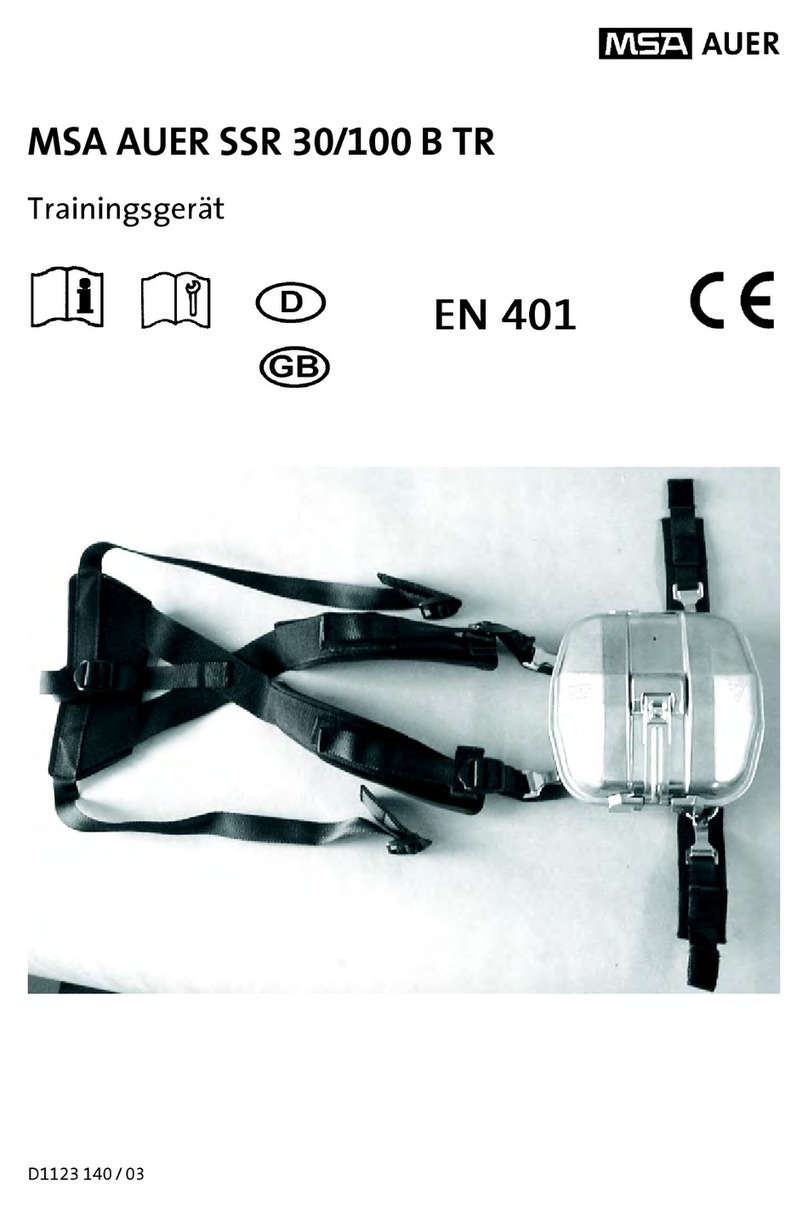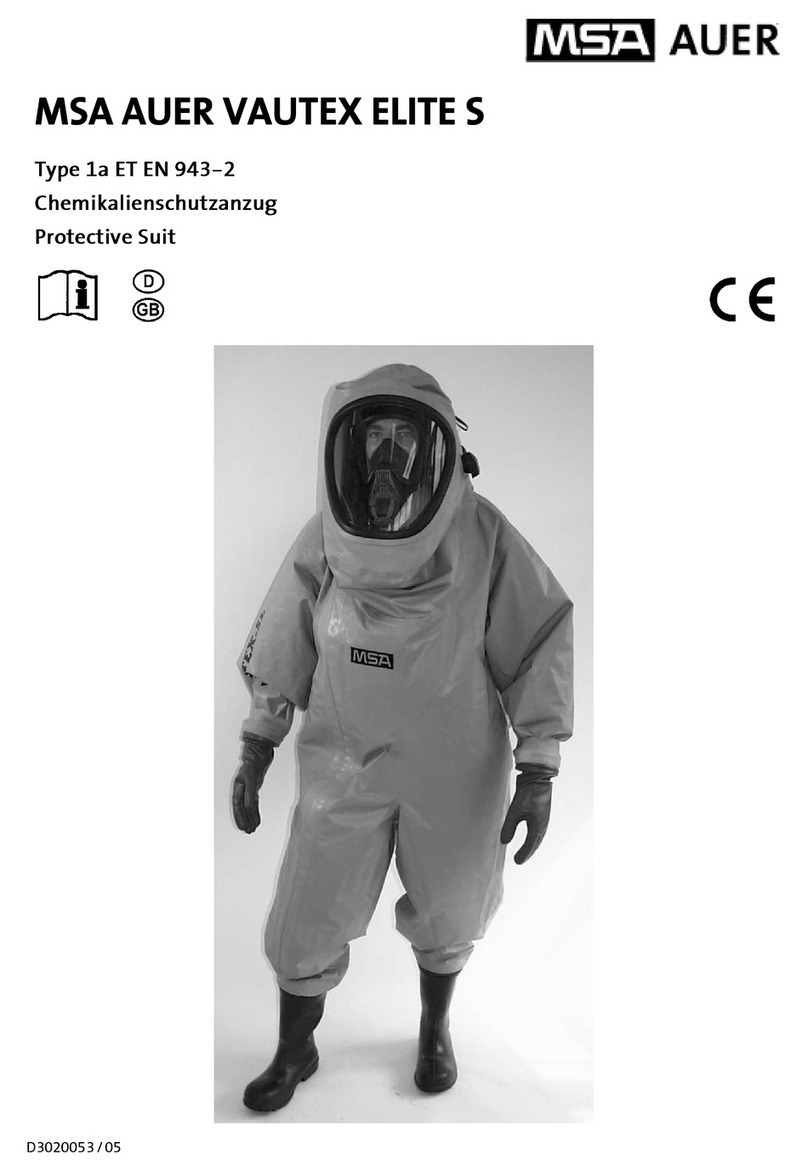
10
7 Service and Maintenance
7.1 General
To maintain the proper efficiency the SAR 30 L must
be inspected in regular intervals, checked for its in-
tegrity and cleaned if necessary (for cleaning do not
use wire brush!). Further maintenance is not re-
quired. Since humidity will deteriorate the chemical
in the apparatus, it is packed air tightly in a container
which is factory lead sealed. The visual checks are
made on the closed and sealed apparatus, the in-
spection frequency is determined by the apparatus
strain. SAR 30 L carried along shall be checked daily
for their outer integrity, and tightness tested at least
once a year (see Inspection Intervals 7.3).
Opened and / or used apparatus must be refur-
bished with a new chemical canister. For safety rea-
sons reuse is not permissible.
Tightness checks, complete checks and refur-
bishment is done by the MSA AUER-Customer
Service, or authorised service centres.
7.2 Used Apparatus
When returning used apparatus, please observe the
following:
•Pack apparatus only when they are cool and dry.
•The components must be complete and undam-
aged. Replacement of components will increase
the repair cost.
7.3 Inspection Intervals
The intervals herein are specified by MSA AUER and
apply to inspections on unopened apparatus in fac-
tory sealed containers. The inspections should be
made at least in the scope specified to maintain the
apparatus in usable condition.
Service and Maintenance
Intervals 1) Procedure
Before and
after
carrying
Inspection External visual check 5)
Annually Tightness check 4)
After
3 years 2) Inspection: Tightness check
and
complete check of all ap-
paratus showing signifi-
cant signs of wear and
tear 3)
After
5 years 2) Full
Inspection: Complete check of all
apparatus 3)
After
8 years 2) Inspection: Tightness check and
complete check of all ap-
paratus showing signifi-
cant signs of wear and
tear 3)
After
10 years End of service life
Defective apparatus must not be used and must
be removed from service and returned to MSA
AUER for inspection.
User specific conditions may require shorter inter-
vals.
The service life depends on type and kind of treat-
ment to which the apparatus were subjected.
1. The intervals are based on the date of manu-
facture (month / year) on the container bottom.
Apparatus manufactured in the same year may
be combined for inspections
2. A service contract with the MSA AUER-
Customer Service is recommended.
3. Complete check = includes full internal examina-
tion. The result determines the further use of the
apparatus.
4. Tightness check with leak tester D1118845 or by
MSA AUER Service.
5. Check if lead seal is intact, and no outer dam-
ages exist.
8 Training with the SAR 30 L TR
To assure that in an emergency the SAR 30 L is
donned quickly, correctly and without loss of time,
the users must undergo in regular intervals training
in practise and theory. For this the training apparatus
SAR 30 L TR is available. The trainer is a replica of
the actual SAR 30 L identical in size, weight, princi-
ple design, use and handling, and breathing resis-
tance. The breathing air is taken from the ambient
atmosphere, i.e. training must be held in environ-
ments free from contamination.
To distinguish the trainer from the actual SAR 30 L,
it is marked blue.
9 Apparatus and Accessories
No. Description Part No.
1Breathing Apparatus SAR 30 LD1131701
2Trainer SAR 30 L TR D1131702
3 Mask mounted spectacles
SAR 30 (without lenses) D2033735
4 Leak tester for apparatus in con-
tainer D1118845
5 Leak test Module for Leak tester,
SAR 30 L D1118316
6 Split Ring for carrying strap
(Pg.10) D1118804
7 Shoulder Strap D1118870
8 Eyelet D1118313
9 Reflective Tapes for Container
Cover D1118090
10 Label SAR 30 L D1131005






























